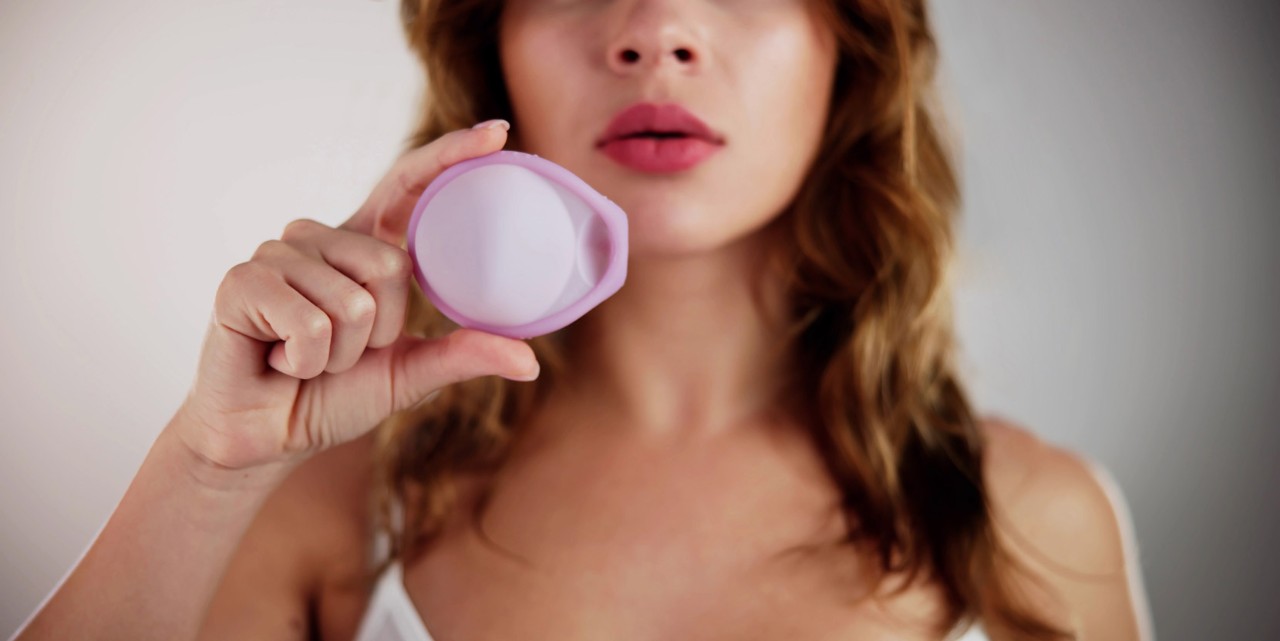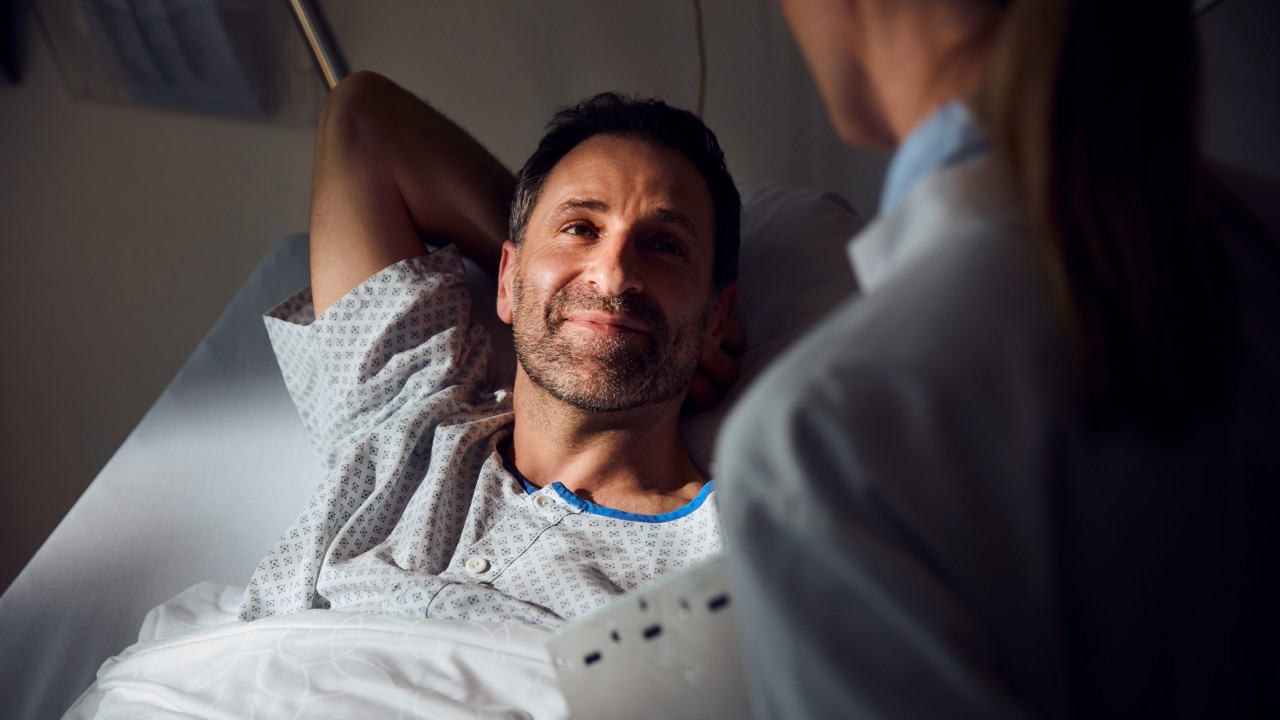What method of contraception is best for me?
These days young people want contraception to be safe and as natural as possible. But how realistic is this wish?

Your first crush, your first kiss, your first time having sex: these new experiences and the butterflies in your stomach are part of what makes becoming an adult so exciting. You also have to start thinking about the right method of contraception. So what’s the best contraceptive available these days? “That varies from woman to woman,” explains Irène Dingeldein, president of the Swiss Society of Gynaecology and Obstetrics. “The most important thing is to choose a method that’s safe, easy to use, doesn’t have major side effects, and matches your lifestyle.”
Consultation with a gynaecologist: not just for women
To find out the best type of contraceptive for you, it’s crucial to get advice from a gynaecologist. Most young women are aged between 14 and 17 when they first visit a gynaecologist. “Often they go because of pain or discomfort during their period, or when they have their first boyfriend,” says Dingeldein. “During the consultation, we talk about the young woman’s lifestyle, whether they smoke or take medication. I ask whether the family has any history of disease, for example thrombosis, lung embolism, heart attack, high blood pressure or cancer.” This influences the choice of recommended contraception.
“I’m glad when a girl’s mother comes with her and supports her,” adds Dingeldein. “And of course also if her boyfriend is with her, too. After all, contraception also affects him.” Nobody has to be examined during the consultation, unless they opt for an IUD: “This has to be placed in the uterus. So I first examine the woman and show her how it all works.”
Preference for natural contraception
Gynaecologist Irène Dingeldein is currently observing a trend towards natural contraceptives: “More and more young adults are interested in a copper IUD. They prefer not to take any hormones to avoid affecting their body or the environment,” says Dingeldein. Ruth Drahts at the Buchenhof women’s practice in Sursee observes the same development: “I also hear a growing number of women say they don’t want to take hormones. But when I explain all the pros and cons, they often end up choosing the pill after all. It’s often the best solution, at least as their first contraceptive,” she explains. “It’s important to realise that there’s no such thing as a completely natural, 100%-safe and readily available contraceptive. You’re always interfering with nature.”
Drahts also points out that there aren’t actually that many alternatives to choose from. Either you suppress ovulation, which is very reliable but affects the woman’s body, or a foreign body – e.g. a hormone or copper IUD – has to be inserted into the uterus, a method that isn’t suitable for all women. Another option is to prevent pregnancy mechanically or chemically, i.e. with a condom and chemical agents – although this involves a certain degree of uncertainty.
How safe are cycle tracking, the temperature method, and so on?
The gynaecologist doesn’t recommend that young women rely completely on tracking their cycle, for example by monitoring temperature or using an app to calculate ovulation. “These are supposed to work out your fertile days. But they’re very unreliable, particularly with young people, and require a lot of discipline. For effective protection, the couple has to abstain from sex or use a condom for several days. So it's not an actual method of contraception.”
The other options aren’t likely to change any time soon either: “Research is being conducted into preparations that have even fewer hormones, or other forms of the coil. But there’s no real prospect of really new methods, for example safe, reversible methods for men with few side effects,” say Drahts. “Nevertheless, most couples find a good, safe method of contraception that suits them.”
Combined hormonal contraception
These forms of contraception contain a combination of oestrogen and progesterone. These synthetic hormones suppress the woman's cycle and come with some desirable side-effects: they can reduce acne, heavy bleeding and pain during her period. They can also bring about improvements in benign conditions of the uterus such as myoma.
However, the risk of thrombosis increases slightly. The preparations are not suitable for women with severe obesity, a predisposition in the family or pre-existing conditions (e.g. thrombosis, epilepsy, diabetes) and for heavy smokers. And: Certain medications, diarrheal diseases and vomiting weaken the effect of contraceptives. “Some women also gain weight and feel that the hormones are causing a physical change. They can trigger depression in those with a predisposition. On the other hand, the hormones can also help reduce mood swings,” says Dingeldein.
-
Combined pill
The daily pill inhibits ovulation, prevents the lining of the uterus from building up, and keeps sperm away from the uterus by thickening the mucus at the cervix. Irène Dingeldein: “There’s no need to panic about thrombosis. But you have to remember the pill is a drug, not candy.”
Reliability: very high
Pro: can postpone menstruation
Cons: has to be taken daily; slightly increases the risk of thrombosis
-
Hormone patch
The hormone patch is stuck to the skin on the buttocks or stomach, the outside of the upper arm or the upper body. You have to change the patch every week, and after three weeks you take one week’s break. The hormones are absorbed via the skin.
Reliability: high
Pros: vomiting and diarrhoea don’t reduce efficacy, can postpone menstruation, doesn’t have to be taken every day
Cons: can irritate skin, is visible and can come off, slightly increased risk of thrombosis
-
Vaginal ring
The soft plastic ring, five centimetres in diameter, can be inserted in the vagina yourself. It remains there, releasing hormones, for three weeks. If the ring interferes with sex you can remove it for up to three hours.
Reliability: high
Pros: vomiting and diarrhoea don’t reduce efficacy, can postpone menstruation, doesn’t have to be taken every day
Cons: the ring may be rejected and feel like a foreign body; slightly increases the risk of thrombosis
Oestrogen-free contraception
These contraceptives only contain the hormone progesterone. The main advantage is that they don’t increase the risk of thrombosis. “These methods are becoming more and more popular. Taking them long term often substantially or completely reduces menstrual bleeding and pain. The downside is that it can lead to skin problems and irregular, sometimes recurrent mid-cycle bleeding,” explains Ruth Drahts. Unlike combined methods, its efficacy isn’t affected by diarrhoea, vomiting, medication, jet lag or incorrect application.
-
Progesterone-only pill
The progesterone-only pill is suitable for women who can't or don't want to take oestrogen. Like the combined pill, it suppresses ovulation. “The lining of the uterus isn’t built up but remains flat. But if you don’t want to get pregnant, that’s fine,” explains Dingeldein.
Reliability: very high
Pro: can be used by women who don’t tolerate oestrogen
Cons: has to be taken every day, can lead to irregular bleeding
-
Hormone implant
A hormone implant is a small plastic rod placed under the skin in your upper arm by your doctor. It can remain there for up to three years.
Reliability: very high
Pros: long-term birth control, suitable for women who can’t tolerate oestrogen, vomiting and diarrhoea don’t impair efficacy, don’t need to take a daily pill
Cons: involves minor surgical intervention by gynaecologist, frequent mid-cycle bleeding
-
Hormonal IUD
The hormonal IUD is placed in the uterus by a gynaecologist. It can remain in place for three to five years.
Reliability: very high
Pros: long-term birth control, suitable for women who can’t tolerate oestrogen, works right at the scene of the action, no suppression of ovulation, the woman’s cycle is not disrupted, efficacy not impaired by vomiting, diarrhoea or medication
Con: has to be inserted by a gynaecologist
-
Hormone injection
Administered by your gynaecologist, a hormone injection prevents pregnancy for three months.
Reliability: very high
Pros: can be used by women who can’t tolerate oestrogen, efficacy not impaired by vomiting or diarrhoea
Cons: requires regular injections, it can take weeks or months to be fertile again once you stop the injections, unfavourable effect on bone formation in young people
Hormone-free contraception
Non-hormonal birth control methods rely on mechanical or chemical contraception.
-
Copper IUD (coil, chain, ball)
The copper IUD is placed in the uterus by a doctor, where it can remain for up to ten years (depending on the model). Copper impedes the mobility of sperm cells and produces an inflammatory reaction that prevents the implantation of fertilised eggs. “I only recommend the copper IUD for young women if they do not suffer severe menstrual pain or heavy bleeding,” says Drahts.
Reliability: very high
Pros: long-term birth control, hormone-free, works right at the scene of the action, efficacy not impaired by vomiting or diarrhoea
Cons: Inserted by a gynaecologist, bleeding often becomes heavier and more painful, coil can shift or fall out
-
Condom
A condom is a sheer sheath rolled over the man's erect penis to prevent semen from entering the woman’s body. However, there is a risk of mishaps and using it incorrectly. “I advise young women to always use a condom in addition to other methods of contraception. It also prevents the spread of sexually transmitted diseases,” explains Dingeldein.
Reliability: medium
Pros: protects against sexually transmitted diseases, only used when needed, hormone-free, few side-effects
Cons: can trigger allergic reactions; must be used immediately before sex; can tear
-
Diaphragm, etc.
Women can insert the diaphragm into their vagina themselves. It blocks sperm from the uterus, but it only works if it fits perfectly and is used correctly. For better protection it can be used with spermicidal cream.
Reliability: medium
Pros: latex and hormone-free
Cons: tricky to use
-
Chemical contraceptives
These contain substances that kill sperm and are available as creams, gels, vaginal suppositories, vaginal film and foam. They’re not very reliable and should only be used in conjunction with mechanical contraceptives such as condoms and diaphragms.
-
Sterilisation/vasectomy
This is only suitable for people who are absolutely sure they don't want (more) children. The decision usually can't be reversed. Both men and women can have the operation. A vasectomy in men can be reversed in most cases. Tubal ligation in women is more complicated and is difficult to reverse.


